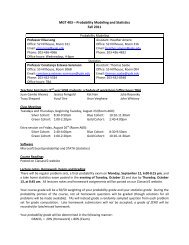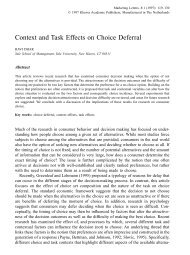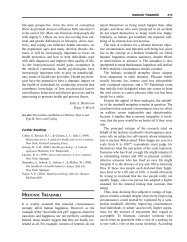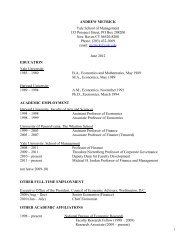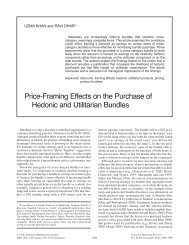The Agglomeration-Differentiation Tradeoff in ... - Yale University
The Agglomeration-Differentiation Tradeoff in ... - Yale University
The Agglomeration-Differentiation Tradeoff in ... - Yale University
You also want an ePaper? Increase the reach of your titles
YUMPU automatically turns print PDFs into web optimized ePapers that Google loves.
2.1.3. <strong>The</strong> Profit Function<br />
Conform<strong>in</strong>g to the multiplicative specifications so far, the observed component of the cost<br />
multiplier, ˆ C fl (Equation 5), is specified as:<br />
B<br />
ˆ ⎛ ⎞<br />
Cfl( xl) = exp⎜∑<br />
γ fbxxbl ⎟<br />
(14)<br />
⎝ b=<br />
1 ⎠<br />
where, bl x are the observed cost shifters at distance band b around location l and γ fbx are format<br />
and band specific cost parameters.<br />
Substitut<strong>in</strong>g the expressions for revenue and cost <strong>in</strong>to our profit specification, Equation<br />
(3), then tak<strong>in</strong>g the log transformation, and after mak<strong>in</strong>g some trivial sign reversals, we have a<br />
equation for the transformed profit function that is very similar to equation (1):<br />
( v pr ) ( Cˆ<br />
)<br />
( ) ( ) ( )<br />
16<br />
( )<br />
r c m<br />
π = ln π = ln + ln + ω − ln + ω + ξ + ε<br />
ifl ifl fl fl l fl l il<br />
2.4 Equilibrium Choice Probabilities:<br />
Recall that the idiosyncratic cost shock, ε il , is known to rivals only <strong>in</strong> distribution. Due<br />
to such <strong>in</strong>complete <strong>in</strong>formation about rivals’ profits, a firm cannot exactly predict rivals’ discrete<br />
actions but it can have rational expectations about rivals’ strategies. Hence, for a given set of<br />
pr r c<br />
vectors of price, revenue and cost shocks across all locations ( ω , ω , ω ), firm i can form<br />
rational expectations about the number of firms that will enter the market, N m , and the location<br />
and format choices of the (N m m m m m<br />
-1) enter<strong>in</strong>g rivals, P P1 , P2 ,... PF<br />
(15)<br />
= ⎡<br />
⎣<br />
⎤<br />
⎦<br />
. That is, correspond<strong>in</strong>g<br />
to each format f (f’) firms we will have a vector of lm conditional choice probabilities (CCPs),<br />
{ 1, 2,...,<br />
}<br />
P = p p p<br />
m<br />
f f f flm<br />
m ( Pf ' { pf '1, pf '2 ,..., pf<br />
'l<br />
} ) m<br />
= . For <strong>in</strong>stance, fj<br />
p ( f ' j)<br />
p is a CCP of a f-



